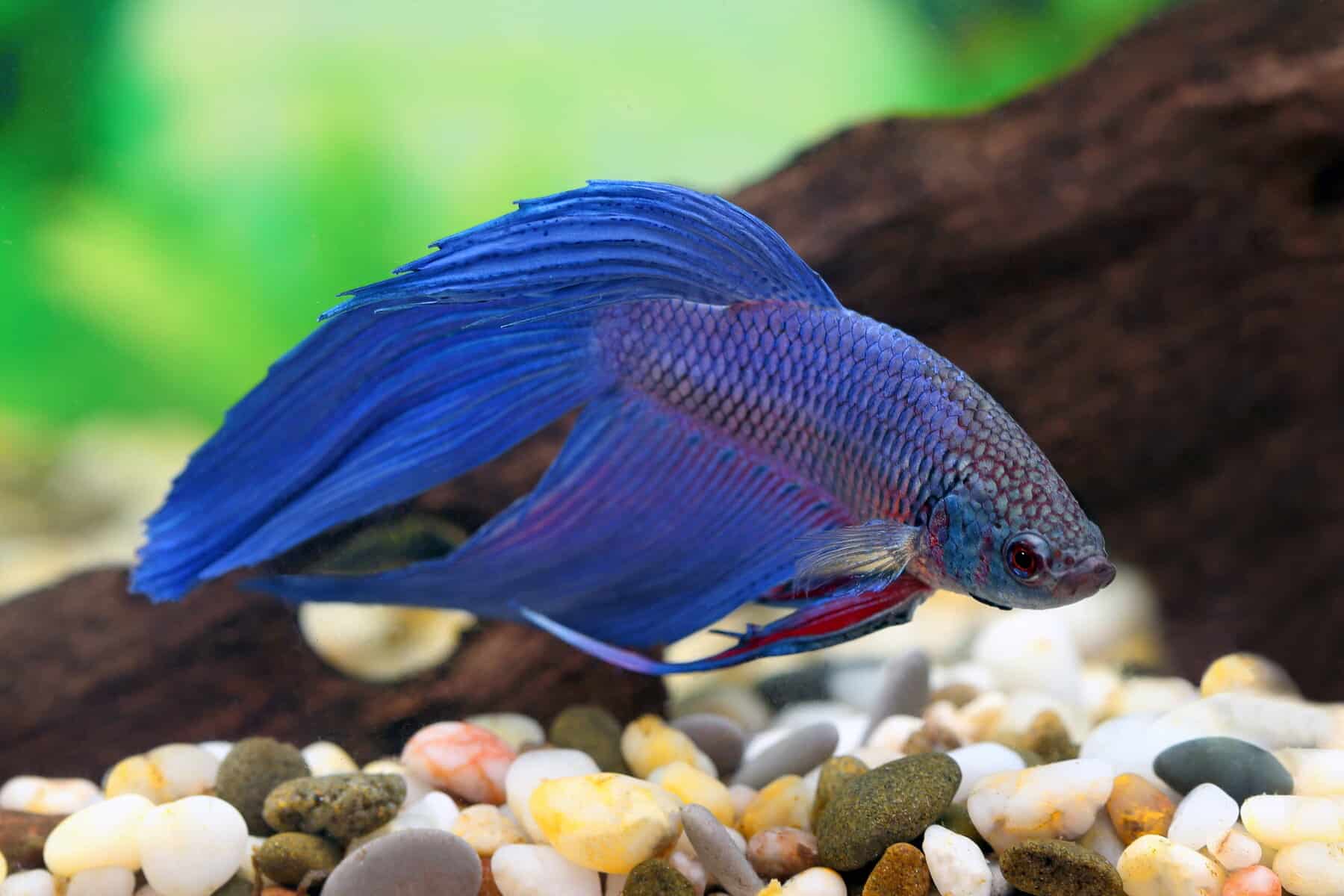When you notice something like a long string of poo hanging below your betta’s body, it can raise a lot of questions. Is this normal? Why is this happening? What is normal in terms of betta bowels, anyway?
Here is the low-down on all your betta fish feces questions: what is typical, when to worry, and how to help your betta feel his best.
Typical Betta Poop
Healthy fish poop will look very similar to its food: small and pellet shaped, sunk to the bottom of their aquarium.
Frequently, betta poop is mistaken for uneaten food. The color of their waste can range from tan to brown, or it can even have red hues depending upon the coloring in their food.
Bettas are a little bit toilet shy, preferring to do their business in private. They will find a place behind a plant or in a corner, which will be their favorite place to relieve themselves. Waste will accumulate most in their little bathroom areas.
So Why Is It Hanging?
Stringy poop hanging from your betta fish can be a sign of constipation, caused by something as simple as over-feeding or a symptom of something else like a bacterial infection or internal parasite.
Constipation is serious for a betta as it can put pressure on its swim bladder, leading to swim bladder disease.
So it’s crucial to figure out what is causing constipation and take the necessary steps to help your betta sort their stomach issues.
Over-feeding
In the wild, animals never know if a meal will be their last. Bettas know this instinctually, so if there is food available, they will eat it, whether they need it or not.
Your pet betta relies on you, the fish keeper, to keep their gluttony in check.
A betta’s stomach is only about the size of its eye, so they only need a few pellets per day. Flake fish foods have greater odds of causing constipation for bettas.
What if It’s White Poop?
White strings or yellow waste from a fish is poop without food in it. It is mucus from their digestive tract.
This can be a visible sign of parasites, as it indicates they have consumed everything your fish ate.
In bettas, white stringy poop is more likely to mean that the fish isn’t eating. Bettas’ appetites can take a hit when they are stressed or bored or when there is some kind of infection (bacterial, viral, or fungal). If your fish has parasites or a disease, it must be treated with the appropriate medications.
To figure out what is causing discolored poop, you’ll have to watch for other symptoms for clues to narrow down the root issue: discolored scales, tattered fins, lethargy, or bloating.
Watch during feedings to make sure your betta is actually eating. If his pale poo is because he’s on a hunger strike, he can be enticed to start eating again with live foods such as brine shrimp or freeze-dried foods like bloodworms.
How Can I Help My Betta Poop?
If there isn’t an underlying issue with your betta’s constipation, here are a few tricks to get things moving.
Raise the Water Temperature
Warmer water can help speed up a tropical fish’s metabolism, so raising the aquarium water’s temperature to 76-81 degrees Fahrenheit can encourage your constipated fish to move things along.
Fasting
If his system is backed up, adding more food won’t help. Stop feedings for one to three days until your betta is pooping normally again.
Add Fiber
When you resume feedings, increasing the fiber in your betta’s diet can support his bathroom routines.
Daphnia or frozen peas that have been thawed and peeled (only half a pea at a time) can do the trick.
Conclusion
Pet fish depend heavily on your observations of their bodies and behavior for their well-being.
Just like humans, fish stools can say much about their health, so knowing what is and isn’t normal about your betta’s poop can help you identify when your betta isn’t feeling his best and might need your help.

